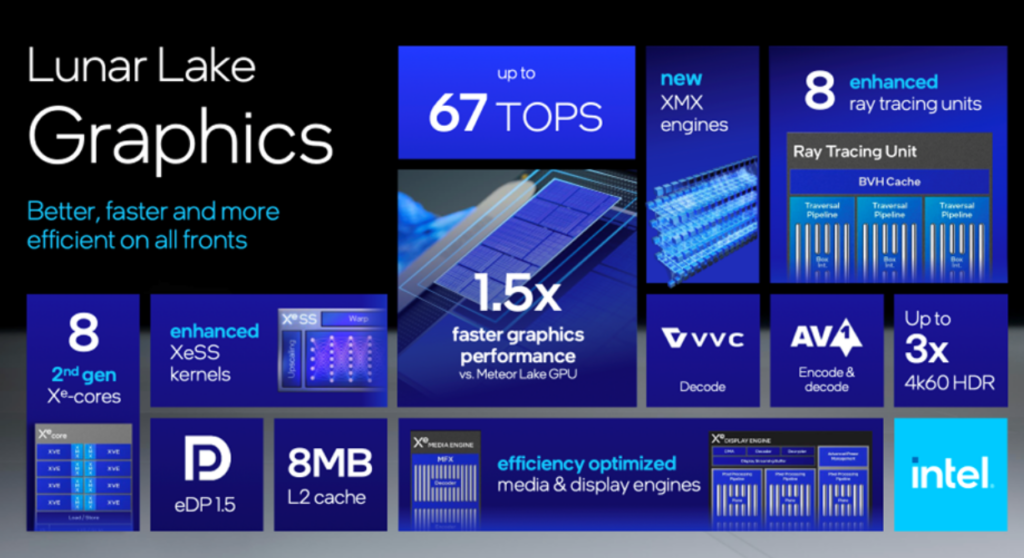Intel unveiled Xe2, a new GPU architecture, at Computex 2024. The new Lunar Lake platform includes Xe2 graphics, which will serve as the foundation for both the upcoming Battlemage discrete GPUs as well as future Arrow Lake processors.

What do we think? It was important for Intel to show off its new GPU running brand-new games after the driver issues that plagued the launch of the previous-generation Alchemist GPU. Over the past two years, Intel has been diligent in releasing new driver updates that fixed and greatly improved the performance of its Arc graphics add-in boards. After all the speculation regarding Battlemage over the previous few months, it’s great to see that the hardware is now here, and Intel is set to continue providing top-end GPUs.
Intel uses F1 24 to show Xe2 is game-ready
Intel Fellow Tom Peterson demonstrated Lunar Lake’s Xe2 graphics running F1 24 at 1080p with “high” settings, with ray-tracing shadows enabled, and running at 60 frames per second.
For Intel and gaming enthusiasts, demonstrating that the Xe2 can run new games is more important than running them at 60 FPS. Previously, Peterson acknowledged the issues Alchemist, Intel’s previous GPU, had at launch.
The Arc A750 and Arc A770, based on the Alchemist architecture, launched in October 2022. The much-anticipated release was hampered by driver bugs that needed to be addressed, preventing many mainstream games from running at acceptable frame rates.
Over the life of the Arc A750 and A770, Intel has continued to improve its drivers. Now, Intel can boast about running many, if not all, mainstream games at 70-plus FPS at 1080p. With this F1 24 demonstration, Intel shows us they have learned many lessons since 2022, and now their drivers appear to be game-ready at launch.
Xe2 will first debut as part of the Lunar Lake platform. Lunar Lake’s all-new architecture will enable:
- New performance cores (P-cores) and efficiency cores (E-cores) designed to deliver performance and energy-efficiency improvements.
- A fourth-generation Intel neural processing unit (NPU) with a claimed maximum of 48 tera operations per second (TOPS) of AI performance. This would mean the NPU delivers up to 4× AI compute over the previous generation, enabling corresponding improvements in generative AI.
- An advanced low-power island, a novel compute cluster that handles background and productivity tasks with extreme efficiency, resulting in amazing laptop battery life.

The graphics are 1.5× faster compared to the previous generation, enhancing both gaming and creative tasks. Xe2 is focused on enabling Intel scalability, from Lunar Lake up to Battlemage discrete GPUs
The Lunar Lake arrangement contains eight Xe cores. Intel claims that it is all about providing experiences that are low in power, great in performance, and adhere to the current industry standards.
JPR’s David Harold wrote a deep dive into Intel’s new graphics architecture, which can be read here.
We hope to follow up in the near future with a review of Intel’s new Battlemage add-in boards as soon as we receive one for testing.